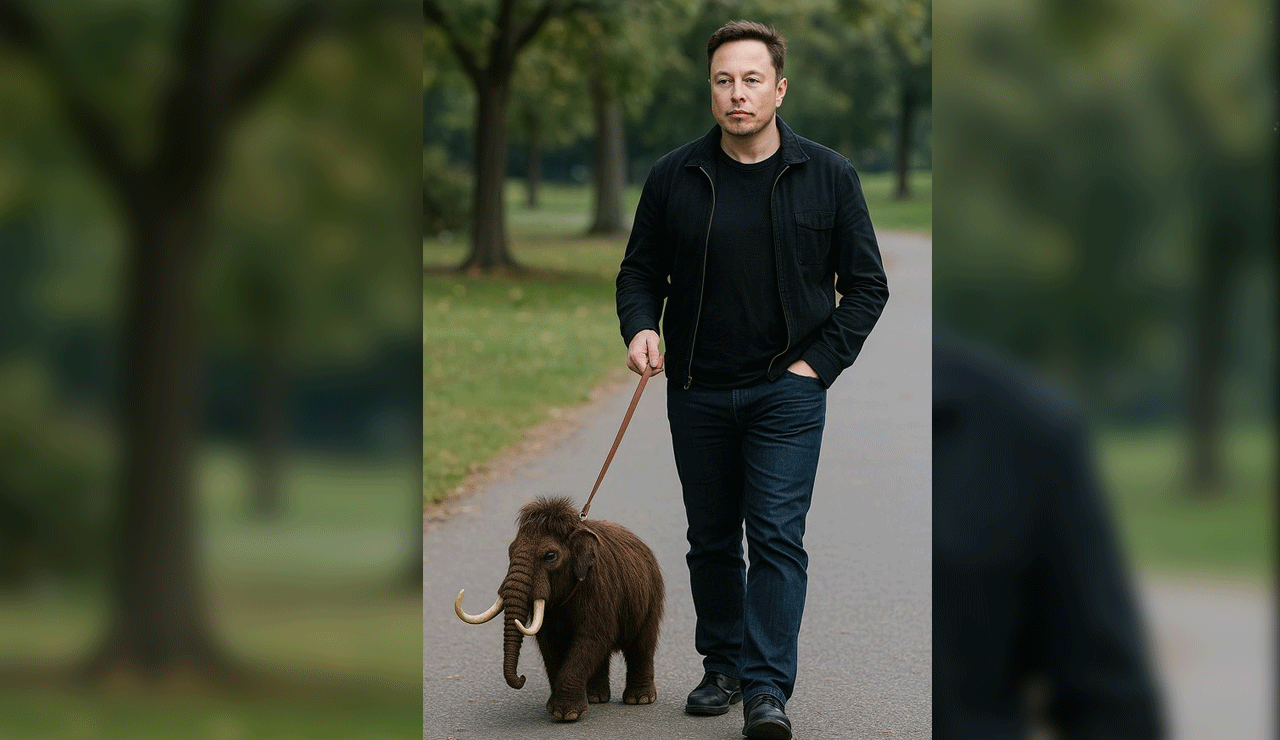Elon Musk and Social Media Go Wild Over Dire Wolves Revival
Elon Musk has recently reacted to a groundbreaking claim by Colossal Biosciences, a company that has allegedly brought the extinct dire wolves back to life. The company announced the creation of genetically engineered wolves that resemble the ancient species, with white fur and muscular jaws.

Sanaa
Elon Musk has recently reacted to a groundbreaking claim by Colossal Biosciences, a company that has allegedly brought the extinct dire wolves back to life. The company announced the creation of genetically engineered wolves that resemble the ancient species, with white fur and muscular jaws.
Table of Contents
Elon Musk Shares Excitement Over Revived Dire Wolves
In a series of posts on X (formerly Twitter), the world’s richest man expressed his admiration for the project. Musk shared a video of three cubs trotting, sleeping, and howling, calling it “cool.” He also added a playful wish, asking for a miniature version of another extinct species, the woolly mammoth, as a pet.
The first post Musk shared included two edited images, one resembling a Time Magazine cover with a white wolf-like creature and the word “Extinct” crossed out. The second image depicted two wolf pups lounging on the iconic Iron Throne from the popular TV series Game of Thrones, which brought the dire wolf species into mainstream popularity.
Colossal Biosciences Announces the World’s First De-Extinction
Colossal Biosciences, known for its ambitious genetic projects, revealed that it had successfully revived three cubs in what it calls the “world’s first de-extinction.” The cubs, two males named Romulus and Remus and a female named Khaleesi, were engineered using cutting-edge genetic technology.
According to Colossal, the company utilized CRISPR technology to edit the DNA of modern wolves to resemble their ancient ancestors. These dire wolves were believed to have gone extinct more than 10,000 years ago, and the scientists have revived them by reconstructing the complete dire wolf genome from ancient DNA found in fossils.
Elon Musk’s Desire for a Miniature Woolly Mammoth
Musk’s reaction was met with enthusiasm from his followers. In a follow-up post, he wrote, “Please make a miniature pet woolly mammoth.” His comment sparked a flurry of responses, with people sharing their own desires for miniature versions of other extinct animals. One user even suggested a “micro hippopotamus,” while another echoed Musk’s wish for a miniature Jurassic Park.
The Future of De-Extinction and Genetic Engineering
Colossal Biosciences has declared its intention to revolutionize history by being the first company to successfully use CRISPR technology for the de-extinction of previously lost species. The company’s groundbreaking work has drawn attention from the scientific community and animal enthusiasts alike.
Also Read: ‘Shin Chan: Our Dinosaur Diary’ Set for Release in India on May 9
However, not everyone is convinced that these engineered creatures can truly be considered “revived.” Biologist Vincent Lynch, from the University at Buffalo, commented that while genetic technology can create organisms that superficially resemble extinct species, it cannot fully revive them. Lynch stressed that the true reintroduction of extinct species remains a complex and uncertain scientific challenge.

Public Reactions to the Project
Social media users have been quick to share their thoughts on the project, with many expressing excitement over the possibility of owning a dire wolf or other extinct species as pets. Some comments included, “Yes! I’m also still waiting for the micro hippopotamus” and “I love my wolf dog, so a Dire wolf would be amazing!”
Despite the excitement, critics are cautious, noting that bringing extinct species back to life may have unintended ecological consequences.
Colossal Biosciences’ de-extinction project has undoubtedly captivated public imagination, especially with high-profile figures like Elon Musk expressing interest. While the future of genetically engineered animals may seem like science fiction, it could signal a new era in genetic research and conservation. However, experts remain divided on the ethics and practicality of such projects.
As Musk and others continue to push the boundaries of science, only time will tell how far this technological revolution will go.

